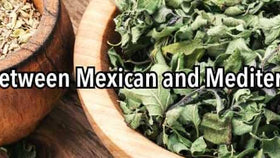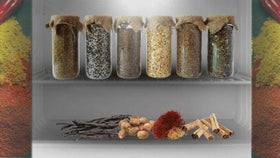Mexican Vanilla Beans: The Mother of Vanilla
What is so special about Mexican Vanilla?
A quick search for “Mexican vanilla” on any search engine delivers pages upon pages of information about vanilla extract but very little regarding whole Mexican vanilla beans. Considering the origin of all vanilla beans is Mexico, this is quite perplexing.
So why is Mexican vanilla extract getting all of the attention? To be quite honest, it is really quite undeserving. Mexican vanilla extract is rarely made from vanilla beans. So if it’s purity you are looking for, please ensure you read the label! If you don’t see vanilla beans on the ingredient list, you are going to want to consider buying a different product.
Note: all Slofoodgroup vanilla products are made from real, high-quality vanilla beans.
These days, Mexican vanilla extract is often made from another type of bean; one that belongs to the pea family. It is sourced from the tonka tree and contains “unusually high levels of coumarin”, a natural chemical compound that acts as a blood thinner. Tonka beans have actually been banned from being used for culinary purposes in United States by the FDA since 1954.
In Mexico, and other places around the world though, tonka beans are frequently used in desserts to impart a flavor reminiscent of vanilla, caramel, and liquorice, but it is a far cry from the vanilla bean that used to grow wild in tropical regions of Mexico, pollinated naturally by the stingless Melipona bee.
Today, vanilla beans are still cultivated in Mexico, but most of the global supply actually comes from other tropical regions around the world—namely Madagascar and Indonesia.
Though all vanilla beans are in some way related to the beans grown in Mexico—the birthplace of vanilla—they have morphed into separate species. Mexican vanilla is a variety of Vanilla Planifolia, the most popular species of the vanilla orchid, known for embarking smooth, buttery, and slightly sweet flavor into dishes, which is why it is so popular in classic Mexican dishes like mole, custards, and anything paired with chocolate. Another Mexican classic, atole, also contains vanilla. It is a beverage made with masa harina, sweetened condensed milk, piloncillo (unrefined sugar packed into a cone shape), and vanilla and is such a comforting treat! In Mexico, Atole is often served on holidays, especially Dia de Los Muertos.
Does atole absolutely need to be made with Mexican vanilla beans, though? The answer is a firm, “NO”. Since other areas of the world supply most of the vanilla planifolia, it can sometimes be difficult to source mexican vanilla beans, so you can absolutely substitute with beans from elsewhere, just ensure they are high-quality Vanilla Planifolia.
Today, we want to share our recipe for Mexican Atole made with Vanilla Planifolia from Papua New Guinea.
Mexican Atole with Vanilla Planifolia
Ingredients for making atole with Vanilla Beans
- 2 oz Piloncillo - Unrefined cane sugar cone
- 1 cup masa harina
- 2 cups milk
- 24 ounces evaporated milk
- 14 ounces sweetened condensed milk
- 2 vanilla beans, seeds scraped
- 1 tablespoon cinnamon
How to make Mexican atole
- Mix together the piloncillo, masa, milk, sweetened condensed milk, vanilla pods and seeds, and cinnamon in a saucepan and warm over medium-low heat.
- Whisk frequently to incorporate all ingredients together and melt the peloncillo.
- Do not let the mixture boil! Simmer the mixture, stirring frequently for 10 minutes.
- Pour the mixture through a wire mesh strainer and pour into cups.
- Serve aside your favorite sweet bread, or drink by itself.







Slofoodgroup
Author